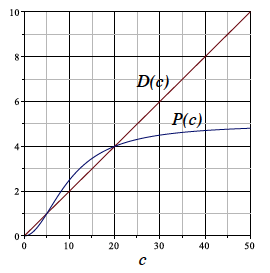Science:Math Exam Resources/Courses/MATH102/December 2014/Question C 02 (c)
{{#incat:MER QGQ flag|{{#incat:MER QGH flag|{{#incat:MER QGS flag|}}}}}}
• QA 1 • QA 2 • QA 3 • QA 4 • QA 5 • QA 6 • QA 7 • QA 8 • QB 1 • QB 2 • QB 3 • QB 4 • QB 5 • QB 6 • QB 7 • QC 1 • QC 2(a) • QC 2(b) • QC 2(c) • QC 2(d) • QC 3 •
|
Make sure you understand the problem fully: What is the question asking you to do? Are there specific conditions or constraints that you should take note of? How will you know if your answer is correct from your work only? Can you rephrase the question in your own words in a way that makes sense to you? |
|
If you are stuck, check the hint below. Consider it for a while. Does it give you a new idea on how to approach the problem? If so, try it! |
Hint |
|---|
|
Is the derivative positive or negative at ? Will the function increase or decrease after ? |
|
Checking a solution serves two purposes: helping you if, after having used the hint, you still are stuck on the problem; or if you have solved the problem and would like to check your work.
|
Solution |
|---|
|
Observe that according to the graph. Therefore, is positive initially, so that would increase with time. On the other hand, the value falls in the interval , i.e., . Remember that when the graphs of and intersect, we have . In other words, the steady states are obtained at the intersection points. In the graph, when we start from and move to the right (because it increases with time), the first steady state that we meet is . Therefore, approaches the steady state . Answer: |
{{#incat:MER CT flag||
}}




















